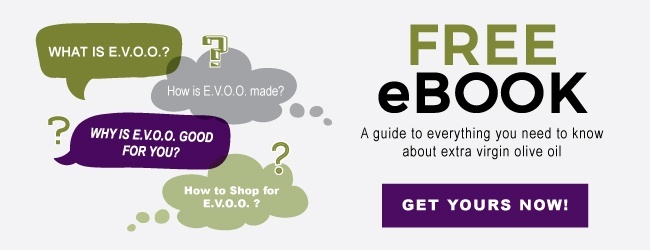The Worst Misconceptions We've Heard about Olive Oil

Olive oil is a highly debated topic among foodies. We've seen the same questions on multiple websites receive contradicting answers again and again. You can cook with it, you can't cook with it...the color defines the quality, the color has nothing to do with the quality...light olive oil means fewer calories etc., etc.! Frankly, we're sick and tired of hearing these claims and we're going to clear up these misconceptions - once and for all!
the worst misconceptions we've heard about olive oil
1. You can't cook with olive oil
We're sure you've heard somewhere that that olive oil has a 'low smoke point' so you shouldn't cook with it. Well, that's false! You can cook with it, heck, you can even fry with it! Extra virgin olive oil's smoke point is around 410 degrees Fahrenheit which is far above the temperature the covers most cooking (250-350 degrees) and the ideal frying temperature (370 degrees).
2. Cooking with olive oil ruins its health benefits
Now that you know olive oil is well suited for all your cooking needs, you may have also heard that heating olive oil will destroy it's health benefits. This is one of the worst misconceptions about olive oil we've ever heard! As long as you are staying below the smoke point of the extra virgin olive oil (410 degrees Fahrenheit) then there is no risk of losing any healthy nutrients from the oil.
3. The color of olive oil relates to the quality
The color of extra virgin olive oil has nothing to do with the quality. The color is influenced by a variety of factors including the growing conditions, type of olive and the time of harvest. Typically, extra virgin olive oil ranges in colors from yellow/green to green.
4. Olive oil that isn't extra virgin isn't that much different
Extra virgin should be the only olive oil you use in your kitchen daily. Olive oil, pure olive oil, or light olive oil should never make the cut. These oils have been refined and chemically altered. A small amount of extra virgin olive oil is combined with these flavorless oils to add color and flavor.
5. You can't trust an olive oil label
Some olive oil labels are misleading, others are wealth of knowledge...you just need to know what to look for. There are several key components to look for on a label when shopping for olive oil such as a bottle or harvest date, extra virgin in the name, and a location. Here are all the things to look for when shopping for olive oil.
6. You can store extra virgin olive oil anywhere
Olive oil does not like light or heat. Store your bottle in a pantry or a cool, dark place - it's your best bet for keeping your olive oil fresh and reducing the deterioration rate. Dark, glass bottles also protect olive oil from harmful UV rays.
7. Olive oil gets better with age
False. Unlike wine, olive oil does not get better with age. Fresh is best when it comes to olive oil, so be sure you're bottle has the latest harvest date or bottle date available. We typically say to use it within 12-18 months of the harvest date - don't save it for a special occasion, use it everyday!
Anything you'd like it add? What's a misconception you've heard that we didn't list here?
Let us know in the comment below!
How to Get your Kids to Love Olive Oil
Summer Olive Oil Skin Savers



